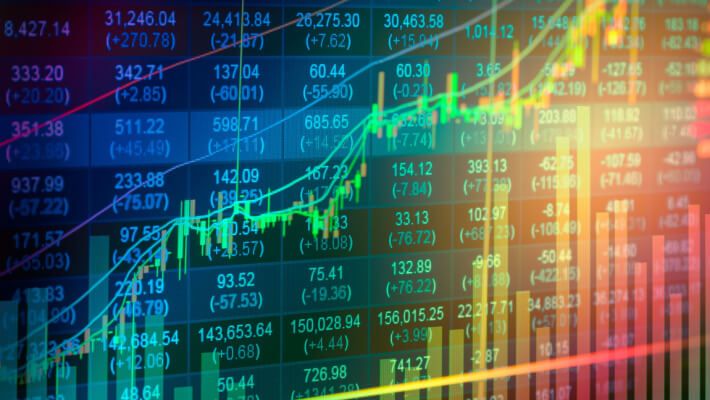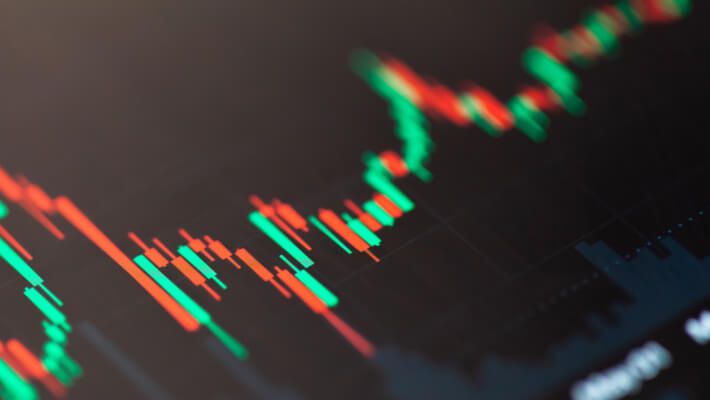Wednesday Nov 22 2023 11:35

14 min
As financial markets evolve, tools and mechanisms that adapt to traders’ needs and aspirations become essential. That is where synthetic indices trading comes in. It’s a robust, flexible, and user-friendly trading option, tailor-made for the contemporary trading landscape.
Whether one is a beginner looking for an entry point or an expert searching for diversification, synthetic indices offer a world of possibilities.
Achieve a solid understanding of synthetic indices trading by exploring its fundamental principles, including its distinctive characteristics, associated risks and considerations, and the mechanics of engaging in the market.
Synthetic indices are financial instruments created using mathematical formulas, simulating price dynamics and market volatility. Unlike traditional indices, which derive value from actual assets like stocks, synthetic indices are based on random number generation or other predetermined formulas.
Their design ensures a level of market volatility that mirrors real financial markets, giving traders an environment to hone their strategies without the direct impact of actual market events.
At a glance, synthetic and traditional indices might appear similar. However, their inherent characteristics differentiate them.

Traditional indices, like the S&P 500 or the Dow Jones Industrial Average, aggregate the performance of selected stocks. Their value rises or falls based on the actual performances of the companies they represent.
On the other hand, synthetic indices, as mentioned earlier, are based on algorithms or mathematical calculations. Their performance isn’t tied to real-world companies or assets. This distinction offers a controlled trading environment, allowing traders to assess strategies without the unpredictability of traditional indices.
Read Also: How to trade indices?
Synthetic indices have become increasingly popular because they provide trading opportunities in an environment that mimics real financial markets. Here are a few examples of these indices:
Similar to any assets and trading styles, synthetic indices trading is prone to risks. Learn the factors you need to consider when trading this type of index.

A significant risk in synthetic indices trading is the over-reliance on algorithmic price determinants. While these algorithms are designed to mimic real-world market volatility, they are, at the end of the day, mathematical models.
Solely depending on them without considering other factors or a thorough understanding can lead to potential pitfalls. Always remember while algorithms determine price movements, human decision-making should determine strategy.
Each synthetic index is constructed from a range of different components. Understanding these components is vital to making informed trading decisions. Without this knowledge, you’re essentially trading in the dark.
By grasping the mechanics behind the indices – how they are created and what influences their movements – you’re in a better position to anticipate potential price swings and adjust your strategies accordingly.
Finally, while synthetic indices offer reduced risks of market manipulation, one must consider the role of brokers and providers. They play a pivotal role in providing these products and ensuring price integrity.
It’s essential to choose reputable online brokers and providers, ensuring that they operate transparently and fairly. While synthetic indices might be hard to manipulate, the broker’s integrity can directly impact your trading experience.
When looking into synthetic indices trading, your initial step involves finding a suitable broker or platform. One cannot emphasise the importance of this step enough.
The platform you opt for determines the tools at your disposal, the fees you pay, and often, the success of your trades.
You may wonder, what makes a broker or platform stand out? For synthetic indices trading, you should look for:
When diving into synthetic indices trading, one will quickly realize the significance of analysis and prediction tools. These tools serve as the backbone for making informed decisions. Let’s delve deeper into these fundamental elements.
Technical analysis tools are essential for those who wish to examine past market data, mainly price and volume, to forecast future price movements. Common tools you might come across include:
Explore other tools by reading this article: What are Bollinger bands?
While technical analysis focuses on charts, fundamental analysis looks at external events and influences, such as economic indicators and news reports. By understanding these, one can better understand the potential shifts in synthetic indices trading.
Without a trading plan, one can quickly lose direction and make impulsive decisions. Follow these steps to guide you in creating your strategy.
Demo accounts and risk management tools are the safety nets of synthetic indices trading. They ensure that while you aim for the stars, your feet remain firmly grounded.

As the name suggests, a demo account is a simulation of the real trading environment. For beginners, this is invaluable. It allows one to practice, understand the nuances, and build confidence without risking real money. By using a demo account, one can test strategies, get familiar with analysis tools, and learn from mistakes without any financial repercussions.
At markets.com, you can create a demo account and practice trading with virtual funds. Our platform continuously updates its demo platform to mirror the real trading environment. Giving you the experience of trading without risking your hard-earned capital.
Check also this interesting article: How to open a free markets.com demo account
Synthetic indices trading has emerged as a beacon of adaptability, meeting the diverse demands of today’s traders. Unlike their traditional counterparts, these indices utilize mathematical formulas to simulate market volatility and price dynamics.
It offers traders the unique advantage of a controlled environment, free from the unpredictable swings often seen in traditional indices. As an added advantage, they present an affordable and flexible trading avenue.
Their round-the-clock availability, minimal costs, and a wide variety of options showcased by popular indices like Volatility Index 75 (VIX 75) and Crash and Boom 1000 (CB 1000) underscore their growing appeal.
However, with this innovative trading tool comes the need for cautiousness. Traders must strike a balance, ensuring they don’t over-rely on algorithmic insights and that their decisions blend machine intelligence and human strategy.
The role of brokers and providers cannot be overstated. Their integrity and transparency directly impact the trading experience, emphasizing the importance of due diligence in choosing a platform.
Are you interested in trading synthetic indices such as the Volatility Index 75 (VIX 75), Crash and Boom 1000 (CB 1000), Jump 75 index or Range Break 100 index?
You can trade these indices through a contract for difference (CFD). In this type of trading, you will be speculating the price of your chosen indices without having an actual asset.
Trade your preferred synthetic indices on one of the best platforms worldwide, markets.com. We have 30 popular CFD indices to choose from.
Become a member of markets.com and access a cutting-edge trading platform. Experience a new, exciting journey of trading!
When considering “CFD synthetic indices” for trading and price predictions, remember that trading CFDs involves a significant degree of risk and could result in capital loss. Past performance is not indicative of any future results. This information is provided for informative purposes only and should not be construed to be investment advice.”